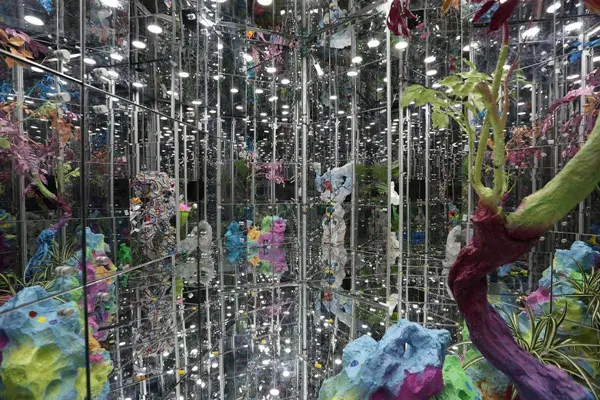Ten years after its first edition, the Singapore Biennale is coming into its own identity - one with a focus on contemporary art in South-east Asia and an interest in fostering a deeper understanding of the culture and histories of its neighbours.
When it opens on Thursday, the biennale, this year titled An Atlas Of Mirrors, will exhibit works that map and reflect the complex social, political, geographical and historical relationships shared by people and places in Asia. Its aim is to help viewers consider how they picture the world and themselves from where they stand.
The show is organised by the Singapore Art Museum and held at eight exhibition venues. It will feature 58 works of art by 63 artists and artist collectives from 19 countries and territories in the region.
When it launched in 2006, the biennale, then organised by the National Arts Council, was an international exhibition that cast its net across 38 countries and regions and featured 198 works by 95 artists and artist collectives in 19 exhibition venues around Singapore.
This year's fifth edition may be more modest in size, but numbers do not tell the full story, says Ms Tan Siuli, the biennale's curatorial co-head.
History Repeats Itself.PHOTO:SINGAPORE ART MUSEUM
"The quality of the biennale experience, rather than a numbers game, was foremost in our minds," she says. And it will be extremely rich and varied, she adds, because the artists have responded to the theme in "beautiful and wonderfully imaginative ways".
An installation called Noah's Garden II by Chinese artist Deng Guoyuan, for example, is a glasshouse made of mirrors, with vividly painted plants and ornamental stones placed in the space. The kaleidoscopic environment conjures up the dazzling and dizzying experience of discovering the unknown.
Chinese artist Qiu Zhijie's work, titled One Has To Wander Through All The Outer Worlds To Reach The Innermost Shrine At The End, on the other hand, features glass sculptures of chimerical beasts standing watch over hand-painted maps of imaginary and real lands. It alludes to how early adventurers, while driven by curiosity and attracted to mysterious lands, would halt their explorations when they encountered strange creatures.
Singapore artist-curator Michael Lee, who is an associate curator of this year's biennale, says the exhibition's move from an outlook that was international in its first three editions to a regional focus since the last edition in 2013, has allowed it to be more introspective and self-directed.
And although it is sticking with a regional approach, it has not stayed stagnant, he says. In 2013, the biennale highlighted artists practising away from the usual capitals of art in South-east Asia. This time, the scope has been extended beyond South-east Asia to include East Asia and South Asia.
There Are Those Who Stay/ There Are Those Who Go.PHOTO:straitstimes.com
Broadening the context of the biennale has an added perk. Independent curator Suman Gopinath, who is based in Bangalore and is also an associate curator for this biennale, says: "It brings together a variety of art practices and opportunities for research and long-term collaborations that can continue even after the biennale comes to an end."
Mr Lee says the presentation of the Benesse Prize in conjunction with this edition of the biennale is also a mark of how far the exhibition has come. The prize is sponsored by Benesse Holdings, a Japanese company whose business interests include the fields of education, leadership training, lifestyle and nursing care.
The prize was launched in 1995 at the prestigious Venice Biennale and, until 2013, had been awarded in conjunction with the biennale in Italy.
This time, it will be given to one artist participating in the Singapore Biennale. It comes with a cash reward of three million yen (S$40,000) and a commission to create a work to be exhibited at Benesse Art Site Naoshima, a well-known art project on the small islands of Naoshima, Teshima and Inujima in Japan.
The biennale's offering is bolstered by affiliate exhibitions at Gillman Barracks, the Institute of Contemporary Arts Singapore at Lasalle College of the Arts and the independent art space Deck in Prinsep Street.
Some artists participating in the biennale will also hold performances during the opening weekend.
Malaysian-born artist Chia Chuyia, who lives and works in Sweden, will knit a garment out of leeks to raise issues about protecting the environment and land, as well as highlight the connection between tradition and the future.
For his performance art piece, Malaysian artist Azizan Paiman will operate a cafe in the plaza of Singapore Art Museum's annexe building in Queen Street as a social experiment to expose the forces that influence people's perception and understanding of things.
(THE STRAIT TIMES)
 简体中文
简体中文



